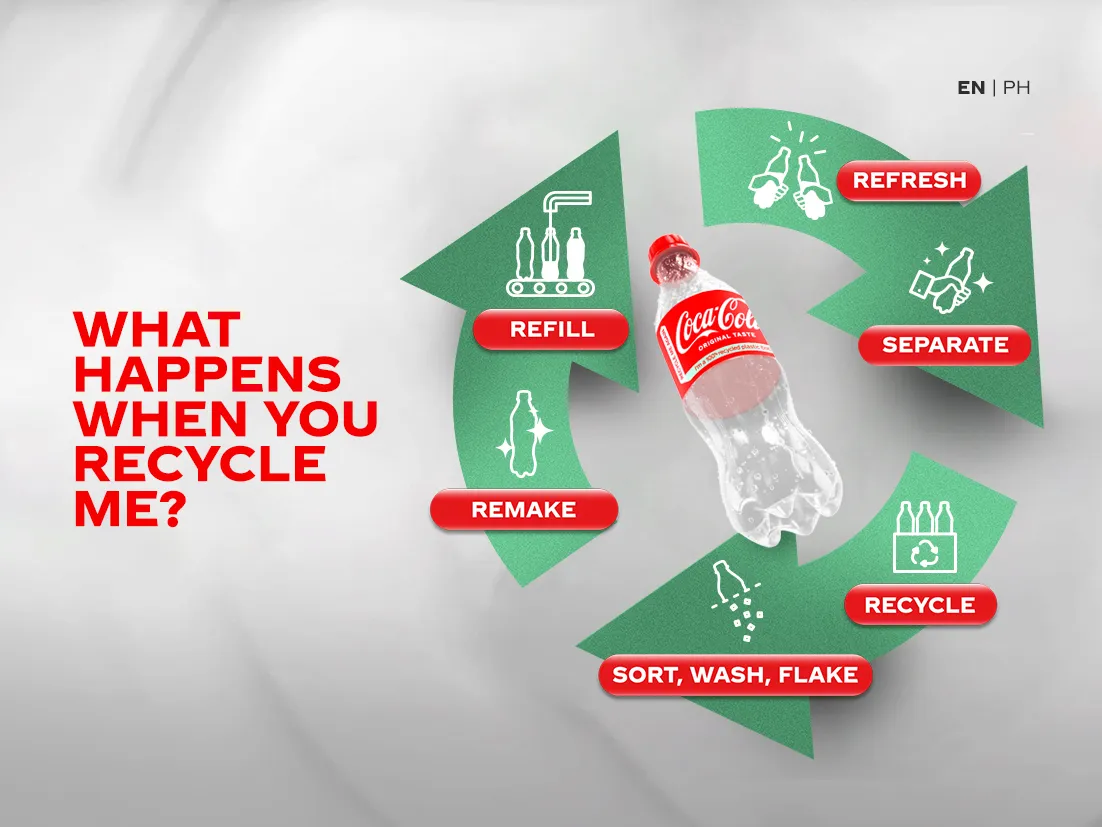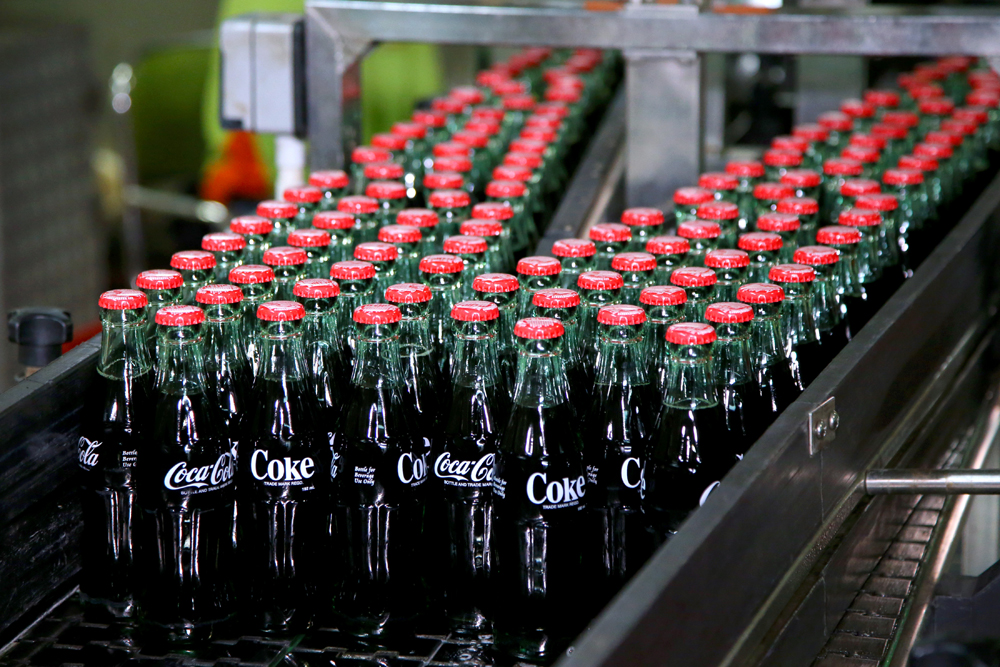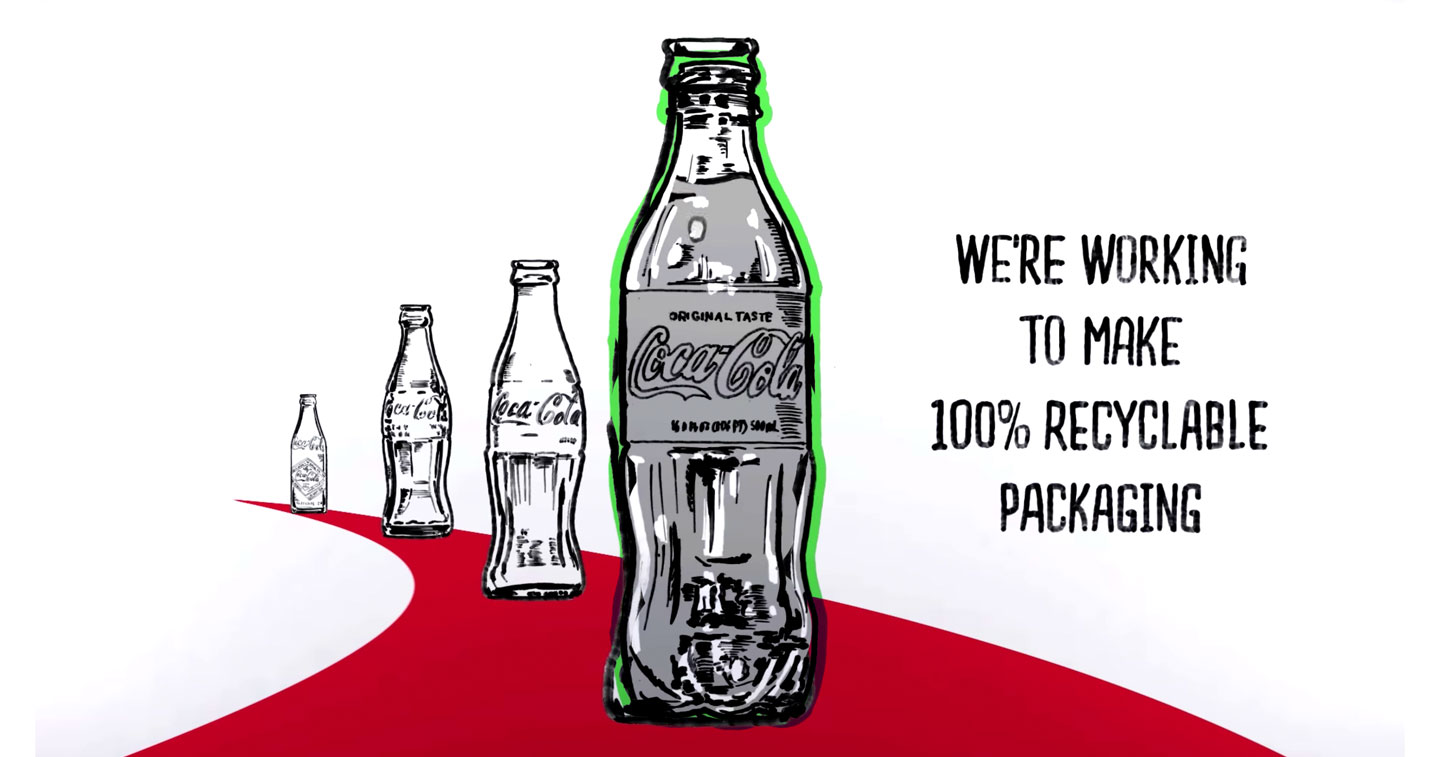Coca-Cola Philippines has recently held up its large strides in sustainability, focusing on the World Without Waste program. This is a global initiative seeking to create a circular economy for packaging that generates minimal waste through reuse and recycling.
Here’s a guide to achieve sustainability:

1. Better Recycling
– Increased Utilization of Recycled Materials: Coca-Cola Philippines increased the utilization of rPET in its bottles to lessen the virgin plastic content used in the production process.
• Bottle-to-Bottle Recycling: This involved the optimization of bottle-to-bottle recycling so that used bottles would make new ones, incurring minimal wastes and reducing the use of raw materials in its production process.
2. Investment in Infrastructural Development
– Facilities for Recycling: Coca-Cola worked with local facilities to avail more materials to be recycled.
– Collection and Sorting Systems: More effective collection and sorting systems were established to ensure that the recyclable materials streamline during separation.
3. Consumer Education and Participation:
– Awareness Campaigns: Coca-Cola launched awareness campaigns amongst the masses on issues concerning recycling and how they can contribute towards a circular economy.
– Return Incentive Schemes: The company initiated incentive programs to encourage customers to return empty bottles, paving the way for a society keen on reusing their wastes.
4. Innovative and Sustainable Packaging:
– Design for Recyclability: Repackaging for better recyclability with reduced structures and enhanced use of recyclable materials.
– Lightweight Packaging: The reduction in the weight of the packaging reduced the carbon footprint as well as increased the rate of recycling.
5. Advocacy on Circular Economy Legislation:
- Engagement with Policymakers: Coca-Cola aimed to support legislation encouraging recycling and reducing waste.
– Industry Alliances: The company entered into collaboration with other companies with an attempt to standardize and support standards that go with the principles of the circular economy.

6. Returnable Glass Bottles:
– Rationale and Benefits: Coca-Cola worked on the increased application of returnable glass bottles, where there would be landfill waste reduction and a lower carbon footprint, but with an increase in brand loyalty.
– Implementation Strategies: Expanding production lines and creating effective collection systems for returns of glass bottles.
- Challenges and Resolution: Coca-Cola solved the logistic difficulties and tried to shift consumer behavior through the way of convenience and reward.
7. Lightweighting PET Packaging:
- Objectives and Benefits: Lightweighting reduced plastic use and carbon footprint, resulting in cost savings associated with production and transportation.
– Implementation: Coca-Cola applied innovative resin technologies and further optimized bottle design to reduce material usage without losing functionality.
• Challenges and Solutions: The lightweighting process was balanced with the need for bottle strength and safety. Investments in research and development, as well as in equipment upgrades were made.

8. Improved Collection and Recycling:
– Collection Systems: Coca-Cola improved the infrastructure with return stations and cooperation with retailers to provide better access to recycling.
– Recycling Processes: Investments in innovative sorting technologies and cooperation with recycling facilities provided the capacity for effective material processing.
– Community and Industry Engagement: Coca-Cola collaborated with government agencies, NGOs, and industry groups to help drive the recycling agenda.
Overall, the efforts being done at Coca-Cola Philippines displayed a decent headway toward a Circular Economy and Sustainability by reducing its environmental impact, enhancing resource efficiency, and sustaining leadership in more sustainable packaging practices.







